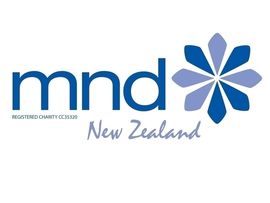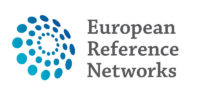 Pregnancy in CF women is no longer an exceptional event, but few information on its effect on clinical status in European CF patients are available. This study describes Italian CF pregnant population, to investigate its effect on CF woman. Data were collected (2010-2015) by the Italian CF Registry. A case-control study was performed between pregnant and never pregnant women.
Pregnancy in CF women is no longer an exceptional event, but few information on its effect on clinical status in European CF patients are available. This study describes Italian CF pregnant population, to investigate its effect on CF woman. Data were collected (2010-2015) by the Italian CF Registry. A case-control study was performed between pregnant and never pregnant women.
Data from ICFR show that CF women can become mother with only slight adverse effect on their nutritional status. Further study should be carried out to investigate long term effect of pregnancy on lung function. The full article you can read here.
Featured posts
 A 70-year-old female presented with a three-year history of evolving macroglossia causing dysphagia and dysarthria, with proximal muscle weakness. Given the classic physical finding of macroglossia, the patient underwent extensive evaluation for amyloidosis which proved to be negative apart from a bone marrow biopsy which stained positive for transthyretin without amino acid sequence abnormality, thus giving wild-type transthyretin amyloidosis. Since the wild-type transthyretin amyloidosis could not entirely explain her clinical presentation and evaluation, further studies were conducted in a sequential manner, thus leading to a diagnosis of Pompe disease explaining her presenting signs and symptoms including her macroglossia. Through this fascinating case, we attempt to highlight the approach for the diagnoses of two rare diseases in a patient by emphasizing the importance of having a broad differential diagnosis when presented with findings which may have been thought as pathognomonic for certain diseases. The whole article you can read here.
A 70-year-old female presented with a three-year history of evolving macroglossia causing dysphagia and dysarthria, with proximal muscle weakness. Given the classic physical finding of macroglossia, the patient underwent extensive evaluation for amyloidosis which proved to be negative apart from a bone marrow biopsy which stained positive for transthyretin without amino acid sequence abnormality, thus giving wild-type transthyretin amyloidosis. Since the wild-type transthyretin amyloidosis could not entirely explain her clinical presentation and evaluation, further studies were conducted in a sequential manner, thus leading to a diagnosis of Pompe disease explaining her presenting signs and symptoms including her macroglossia. Through this fascinating case, we attempt to highlight the approach for the diagnoses of two rare diseases in a patient by emphasizing the importance of having a broad differential diagnosis when presented with findings which may have been thought as pathognomonic for certain diseases. The whole article you can read here.
 Louisiana State University Health Sciences Center in New Orleans is conducting a Natural History Study of the Usher syndrome community in Louisiana to assist in the development of treatments and to raise awareness of the syndrome. More information about the study you can find here: US in LA Natural History Advertisement Flyer
Louisiana State University Health Sciences Center in New Orleans is conducting a Natural History Study of the Usher syndrome community in Louisiana to assist in the development of treatments and to raise awareness of the syndrome. More information about the study you can find here: US in LA Natural History Advertisement Flyer
 There are only limited treatments currently available for Motor Neurone Disease, each with modest benefits. The New Zealand Motor Neurone Disease Registry was established in 2017 to facilitate participation in research and clinical trials, and to aid researchers in planning and recruitment. The NZ MND Registry collects demographic, contact and clinical data for those who choose to enroll. 12th July 2018, there were 142 participants enrolled in the NZ MND Registry. 85.5% of participants are diagnosed with sporadic MND and 6.1% with familial MND. The registry has facilitated entry of patients into three studies to date. The role of patient registries is an ever changing one, but with clear utility at every point of along the pathway to drug discovery. The whole article you can check here.
There are only limited treatments currently available for Motor Neurone Disease, each with modest benefits. The New Zealand Motor Neurone Disease Registry was established in 2017 to facilitate participation in research and clinical trials, and to aid researchers in planning and recruitment. The NZ MND Registry collects demographic, contact and clinical data for those who choose to enroll. 12th July 2018, there were 142 participants enrolled in the NZ MND Registry. 85.5% of participants are diagnosed with sporadic MND and 6.1% with familial MND. The registry has facilitated entry of patients into three studies to date. The role of patient registries is an ever changing one, but with clear utility at every point of along the pathway to drug discovery. The whole article you can check here.
 The animation clip below is an information video about the European Reference Networks (ERN), released by The European Commission for patients and their health professionals. In the clip is explained what is the ERN, how does it work, how can it help and other relevant information. Under the video you will find the link to the website of the European Commission, where the clip is uploaded.
The animation clip below is an information video about the European Reference Networks (ERN), released by The European Commission for patients and their health professionals. In the clip is explained what is the ERN, how does it work, how can it help and other relevant information. Under the video you will find the link to the website of the European Commission, where the clip is uploaded.
 Enzyme replacement therapy is currently considered the standard of care for the treatment of mucopolysaccharidoses (MPS) type I, II, VI, and IV. This approach has shown substantial efficacy mainly on somatic symptoms of the patients, but no benefit was found for other clinical manifestations, such as neurological involvement. New strategies are currently being tested to address these limitations, in particular to obtain sufficient therapeutic levels in the brain. Intrathecal delivery of recombinant enzymes or chimeric enzymes represent promising approaches in this respect. It is now clear that the clinical manifestations of MPS are not only the direct effects of storage, but also derive from a cascade of secondary events that lead to dysfunction of several cellular processes and pathways. Some of these pathways may represent novel therapeutic targets and allow for development of novel or adjunctive therapies for these disorders. The full article you can read here.
Enzyme replacement therapy is currently considered the standard of care for the treatment of mucopolysaccharidoses (MPS) type I, II, VI, and IV. This approach has shown substantial efficacy mainly on somatic symptoms of the patients, but no benefit was found for other clinical manifestations, such as neurological involvement. New strategies are currently being tested to address these limitations, in particular to obtain sufficient therapeutic levels in the brain. Intrathecal delivery of recombinant enzymes or chimeric enzymes represent promising approaches in this respect. It is now clear that the clinical manifestations of MPS are not only the direct effects of storage, but also derive from a cascade of secondary events that lead to dysfunction of several cellular processes and pathways. Some of these pathways may represent novel therapeutic targets and allow for development of novel or adjunctive therapies for these disorders. The full article you can read here.
Implementing a population-based rare diseases registry in Spain: the Navarre´s experience
 In 2012, the Spanish Rare Disease Registries Research Network (Spain-RDR) was consolidated with the aim of creating a Spanish population-based Rare Diseases Registry. In order to achieve this, each of the 17 Spanish Regions had to develop its own regional registry with a common agreed methodology. The Population-based Rare Disease Registry of Navarre was created in 2013 and, since then, its implementation is been carried out. Initially, the main data source used to capture cases was the Assisted Morbidity Registry of Navarre, which includes the Minimum Basic Data Set of every regional hospital discharges (both public and private). Afterwards, new data sources were been added and ongoing validation studies of captured cases were been developed. Due to the low prevalence of these diseases, a high false positives rate among the detected cases greatly affects the estimation of epidemiological indicators, which makes it necessary to validate the cases by verifying the diagnoses. More information about the registry you can find here.
In 2012, the Spanish Rare Disease Registries Research Network (Spain-RDR) was consolidated with the aim of creating a Spanish population-based Rare Diseases Registry. In order to achieve this, each of the 17 Spanish Regions had to develop its own regional registry with a common agreed methodology. The Population-based Rare Disease Registry of Navarre was created in 2013 and, since then, its implementation is been carried out. Initially, the main data source used to capture cases was the Assisted Morbidity Registry of Navarre, which includes the Minimum Basic Data Set of every regional hospital discharges (both public and private). Afterwards, new data sources were been added and ongoing validation studies of captured cases were been developed. Due to the low prevalence of these diseases, a high false positives rate among the detected cases greatly affects the estimation of epidemiological indicators, which makes it necessary to validate the cases by verifying the diagnoses. More information about the registry you can find here.
 The National Institutes of Health (NIH) Undiagnosed Diseases Program (UDP) studies rare genetic disorders not only to achieve diagnoses, but to understand human biology. To ascertain the contribution of protein glycosylation to rare diseases, the NIH UDP used mass spectrometry to agnostically identify abnormalities of N-linked and O-linked glycans in plasma and free oligosaccharides in the urine of 207 patients. The full article you can find here.
The National Institutes of Health (NIH) Undiagnosed Diseases Program (UDP) studies rare genetic disorders not only to achieve diagnoses, but to understand human biology. To ascertain the contribution of protein glycosylation to rare diseases, the NIH UDP used mass spectrometry to agnostically identify abnormalities of N-linked and O-linked glycans in plasma and free oligosaccharides in the urine of 207 patients. The full article you can find here.
 The International Rare Diseases Research Consortium (IRDiRC) is aimed at promoting international collaboration and advance rare diseases research worldwide, and has as one of its goals to contribute to 1000 new therapies for rare diseases. IRDiRC set up a Small Population Clinical Trials (SPCT) Task Force in order to address the shortcomings of our understanding in carrying out clinical trials in rare diseases.
The International Rare Diseases Research Consortium (IRDiRC) is aimed at promoting international collaboration and advance rare diseases research worldwide, and has as one of its goals to contribute to 1000 new therapies for rare diseases. IRDiRC set up a Small Population Clinical Trials (SPCT) Task Force in order to address the shortcomings of our understanding in carrying out clinical trials in rare diseases.
Recommendations have been issued based on discussions of the Small Population Clinical Trials Task Force that aim to contribute towards successful therapy development and clinical use. While randomised clinical trials are still considered the gold standard, it is recommended to systematically take into consideration alternative trial design options when studying treatments for a rare disease. Patient engagement is critical in trial design and therapy development, a process which sponsors are encouraged to incorporate when conducting trials and clinical studies. The full article you can find here.
 Mucopolysaccharidoses (MPS) comprise a group of lysosomal disorders that are characterized by progressive, systemic clinical manifestations and a coarse phenotype. The different types, having clinical, biochemical, and genetic heterogeneity, share key clinical features in varying combinations, including joint and skeletal dysplasia, coarse facial features, corneal clouding, inguinal or abdominal hernias, recurrent upper respiratory tract infections, heart valve disease, carpal tunnel syndrome, and variable neurological involvement. In the severe forms, these features usually appear in the first months of life, but a correct diagnosis is often reached later when suggestive signs are manifest. All MPS types may have severe or attenuated presentations depending on the residual enzymatic activity of the patient. Based on data from the literature and from personal experience, here we underline the very early signs of the severe forms which should alert the paediatrician on their first appearance. A few early signs are typical of MPS (i.e. gibbus) while many are unspecific (hernias, upper airway infections, organomegaly, etc.), and finding the association of many unspecific signs might prompt the paediatrician to search for a common cause and to carefully look for other more specific signs (gibbus and other skeletal deformities, heart murmur). We stress the need to increase awareness of MPS among paediatricians and other specialists to shorten the still existing diagnostic delay. A timely diagnosis is mandatory for the commencement of treatment as soon as possible, when available, to possibly obtain better results. The full article you can read here.
Mucopolysaccharidoses (MPS) comprise a group of lysosomal disorders that are characterized by progressive, systemic clinical manifestations and a coarse phenotype. The different types, having clinical, biochemical, and genetic heterogeneity, share key clinical features in varying combinations, including joint and skeletal dysplasia, coarse facial features, corneal clouding, inguinal or abdominal hernias, recurrent upper respiratory tract infections, heart valve disease, carpal tunnel syndrome, and variable neurological involvement. In the severe forms, these features usually appear in the first months of life, but a correct diagnosis is often reached later when suggestive signs are manifest. All MPS types may have severe or attenuated presentations depending on the residual enzymatic activity of the patient. Based on data from the literature and from personal experience, here we underline the very early signs of the severe forms which should alert the paediatrician on their first appearance. A few early signs are typical of MPS (i.e. gibbus) while many are unspecific (hernias, upper airway infections, organomegaly, etc.), and finding the association of many unspecific signs might prompt the paediatrician to search for a common cause and to carefully look for other more specific signs (gibbus and other skeletal deformities, heart murmur). We stress the need to increase awareness of MPS among paediatricians and other specialists to shorten the still existing diagnostic delay. A timely diagnosis is mandatory for the commencement of treatment as soon as possible, when available, to possibly obtain better results. The full article you can read here.
